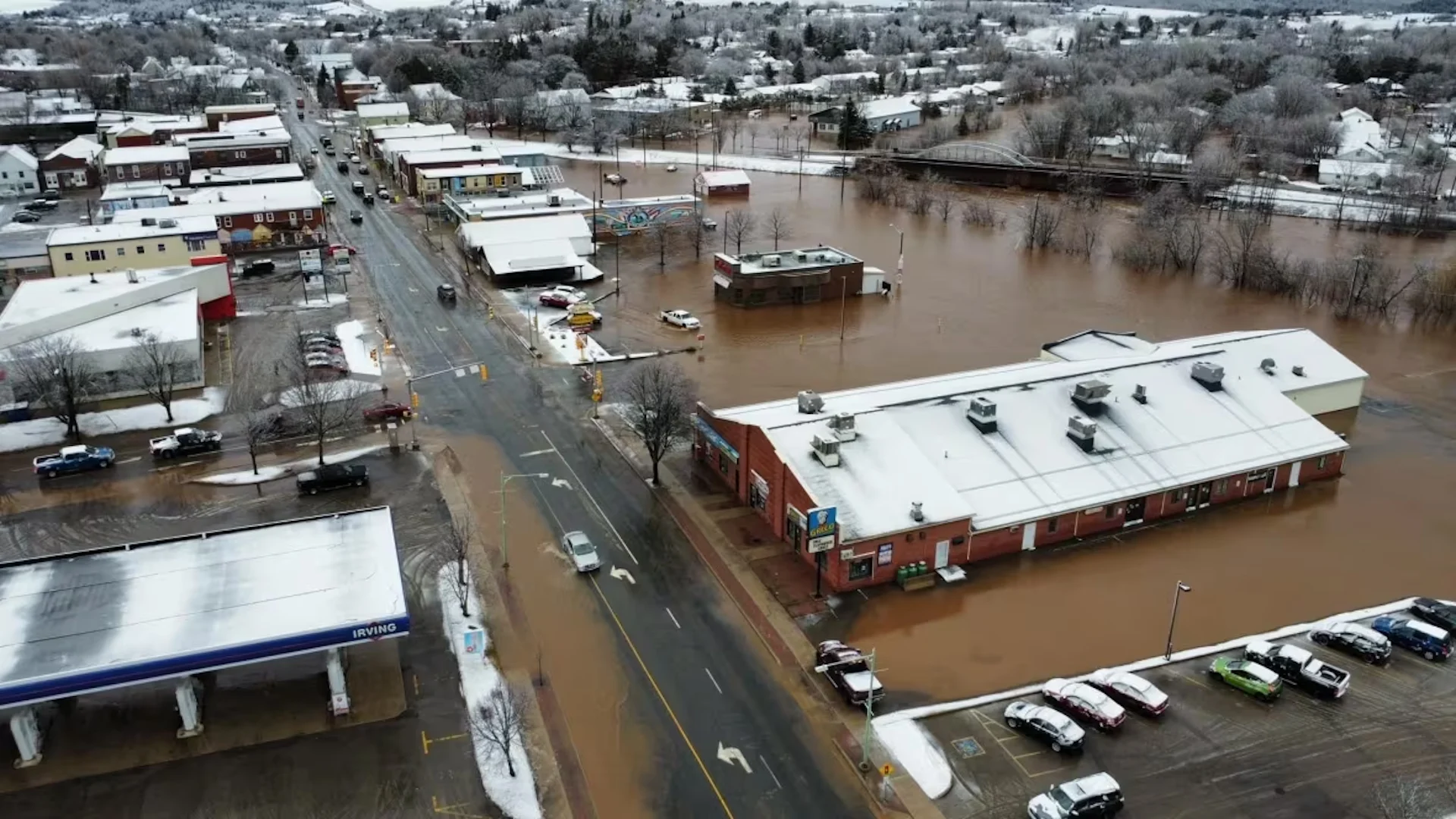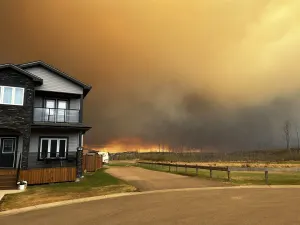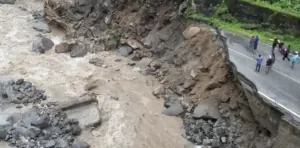
'Hard to stay positive': Sussex-area floods prompt frustration
Flooding in Sussex from a day-long rainstorm closed at least 12 roads Thursday, forced 24 people out of their homes, and provoked comparisons with one of the worst floods ever to hit the town.
Sussex received more than 200 millimetres of rain in under 24 hours, equivalent to about seven feet (more than two metres) of snow, Mayor Marc Thorne said.
RELATED: Soaking rains, 100 km/h winds, freeze hit the East Coast, power outages climb
Later in the day, he and Public Safety Minister Kris Austin held a news conference to give updates on the flood.
Thorne said Trout Creek can handle a water rise of 1.7 metres, but this flood saw water levels rise 2.5 metres over its banks.
The 24 people who were forced to leave their homes did so in an organized manner, he said.
Austin asked residents with flood damage not covered by insurance should start photographing and documenting damage, saying a provincial phone line to report damage will be open "in the coming days."
He was asked by reporters about residents who say they're frustrated with frequent flooding. Austin said he understands the frustration, especially since extreme weather events are happening more often across the province.

Barbour's Park on Stewart Avenue was flooded on Thursday. (Julia Wright/CBC)
"The reality is, times are changing," Austin said. "And we have to mitigate and we have to work towards what our homes will look like around some of these areas — or should we even be building around some of these areas?
"There is no silver bullet to this."
Austin made the point several times that flood mitigation is a "better way to go" than bailing out the same properties after each flood, but he said the federal government has to take the lead.
Austin said damage costs are high, "but let's not fool ourselves, the costs of mitigation is high." Despite those costs, he said protecting residents' homes and businesses is important.
"We can't continue to bail out the same properties over and over again, that's where mitigation comes in. But again, it has to be a federal imitative."
Austin met with federal officials about disaster financial assistance plans for New Brunswick once last fall and again last week, he said.

The Tim Hortons in Sussex was surrounded by pooling water. (Julia Wright/CBC)
Right now, federal officials are working on how disaster relief funding is allocated, he said.
After 2014, Thorne said the town had some designs done to see what could be done for flood mitigation. He said a $1.2 million berm was created for the west side of the community. This helped protect businesses and properties during this flood, he said in an interview.
Thorne said the town also applied for $15 million from the federal government for a $38 million project he said is "critical to the survival in our community," but said it has since stalled.
A spokesperson for Infrastructure Canada responded to a request from CBC News for an update on the funding the mayor referenced, but declined to share specifics about funding for Sussex, citing "partner confidentiality."

A drone captured a photo of significant flooding in the town of Sussex. (Submitted by Ronnie Davis)
The response went on to say disaster mitigation is a "key priority" for cities and towns across Canada, and the department will continue to work with partners to fund climate change projects.
In Sussex, the mayor worries about future flooding when cleanup has barely begun on this one.
"When you're looking around our community like I am right now, it's hard, it's hard to stay positive," Thorne said.
"And the storms … they're kind of increasing their frequency and intensity."
Too soon to know how many homes damaged
Thorne said the town of 5,700 is ensuring warm shelter for those people who can't get back to their homes yet.
Residents in affected areas have made efforts to protect their homes after other recent floods, so these people may be able to return sooner, he said.
He said it's too soon to have a final tally of how many homes were damaged.
Some people have felt traumatized by the event, Thorne said, and it will take the town more than a year to fix some of the damage to town infrastructure.
But being able to tell residents that the creek is receding has an immediate effect on their stress, he said.
"It takes a long time to get past this, but the scars that people feel — never," Thorne said, choking up.
The town has electronic virtual modelling of the creek, which helps keep the community informed, he said.

A snow-covered vehicle drives through a flooded stretch of road — a good representation of the quick change in temperature that occurred Thursday morning. (Julia Wright/CBC)
An emergency operations centre was mobilized on Wednesday night.
On Thursday morning, the precipitation had started to switch to snow.
A warming centre was opened at 1067 Main St.
By late morning, water levels had decreased significantly, and neighbours in the flooded areas were out and about with their sump pumps.
Some roads reopened, but there were still dangerous washouts on others.
The Town of Sussex posted an update on Facebook that dumpsters would be placed on affected streets for residents to dispose of any household items ruined by the flood.
Sussex resident Luke Belyea said he woke up Thursday to snow coming down and a flash freeze on the horizon.
But knowing how much rain fell the day before and overnight, he ventured closer to the downtown to check on his place of work, the Sussex Armouries.
"The flooding had already taken over the road down in front of the rink, all around the Armouries and all around Tim Hortons," he said.
Without being able to get any closer but still wanting to check on his work building, Belyea, who takes photographs as a hobby, flew his drone over the area.
Sussex Chief Administrative Officer Scott Hatcher said that despite barricades, people have been trying to drive on closed streets. He said he understands some people may want an up-close look at the flooding, but they are just causing more damage by creating waves.
The Sussex area has suffered a lot of flooding over the years, and this latest event brought comparisons with a major flood in April 2014. Hatcher said there was significant rain before the 2014 flood as well, but this storm met or exceeded that amount of water.
More than 200 millimetres fell this time, and many residents experienced property damage, he said.
Belyea said the flooding that he captured on his drone was similar to what was experienced during the flood of 2014. The only difference, he said, are the dropping temperatures, which he worries will cause even more damage to people's homes when the water freezes.
This article was originally published for CBC News. It contains files from Hannah Rudderham, Julia Wright, Sam Farley, Kayla Hounsell, and Maritime Noon.









